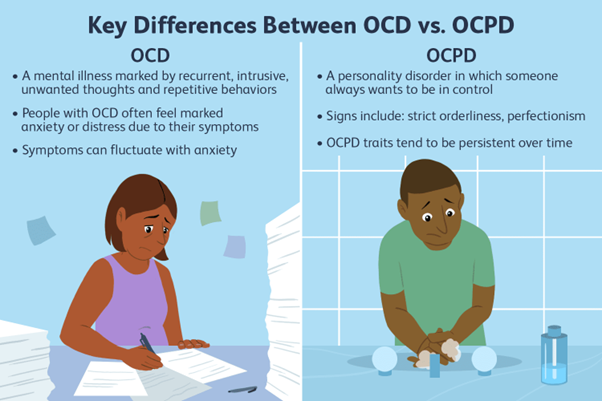A nurse is assessing a client who has obsessive-compulsive personality disorder. Which of the following findings should the nurse expect?
Goal-oriented
Provocative behaviour
Lack of empathy
Lability
The Correct Answer is A
Choice A reason:
Goal – oriented is the correct answer. Obsessive-compulsive personality disorder (OCPD) is a personality disorder characterized by a pattern of preoccupation with orderliness, perfectionism, and control. Individuals with OCPD tend to be highly organized, detail-oriented, and focused on achieving their goals. They often set strict standards for themselves and others and are driven by a strong need for perfection in all aspects of their lives.
Choice B reason
Provocative behaviour is not a characteristic commonly associated with obsessive-compulsive personality disorder (OCPD). In fact, individuals with OCPD tend to be more reserved, cautious, and serious in their interactions with others.
Choice C reason:
Lack of empathy While individuals with OCPD may struggle with interpersonal relationships due to their rigid standards and expectations, they typically do not lack empathy. They might find it challenging to understand and relate to emotions or perspectives that do not align with their own, but this is different from a complete lack of empathy, which is more commonly seen in certain other personality disorders.
Choice D reason.
Lability refers to emotional instability or rapid and extreme shifts in emotions. This is not a typical feature of obsessive-compulsive personality disorder (OCPD). Individuals with OCPD tend to be emotionally restrained and might have difficulty expressing emotions, rather than experiencing emotional lability.

Nursing Test Bank
Naxlex Comprehensive Predictor Exams
Related Questions
Correct Answer is C
Explanation
A. Hypotension is not an adverse effect of epinephrine, but rather a sign of anaphylaxis that epinephrine can help to reverse by causing vasoconstriction and increasing blood pressure.
B. Report of tinnitus is not an adverse effect of epinephrine, but rather a symptom of aspirin toxicity, which can occur in some clients who take aspirin for allergic reactions.
C. Report of chest pain is an adverse effect of epinephrine, as it can cause cardiac dysrhythmias, angina, and myocardial ischemia by increasing the heart rate and oxygen demand of the myocardium.
D. Ecchymosis is not an adverse effect of epinephrine, but rather a sign of bleeding disorders or trauma that can cause bruising under the skin.
Correct Answer is D
Explanation
A. Contact the facility's ethics committee: This is incorrect because it is not an urgent action and it does not address the client's immediate needs. The ethics committee can be consulted later if there are ethical dilemmas or conflicts regarding the client's care.
B. Obtain consent from the client's employer: This is incorrect because it is not a valid source of consent. The employer has no legal or ethical authority to make decisions for the client, unless they are also a designated surrogate or proxy.
C. Limit care to comfort measures: This is incorrect because it does not meet the standard of care for an emergency situation. The nurse has a duty to provide life-saving interventions for a client who is unconscious and requires emergency medical procedures, unless there is evidence of a valid advance directive that states otherwise.
D. Proceed with provision of medical care: This is correct because it follows the principle of implied consent, which assumes that a reasonable person would consent to emergency treatment if they were able to do so. The nurse should document the circumstances and continue to search for family members or other sources of consent.
Whether you are a student looking to ace your exams or a practicing nurse seeking to enhance your expertise , our nursing education contents will empower you with the confidence and competence to make a difference in the lives of patients and become a respected leader in the healthcare field.
Visit Naxlex, invest in your future and unlock endless possibilities with our unparalleled nursing education contents today
Report Wrong Answer on the Current Question
Do you disagree with the answer? If yes, what is your expected answer? Explain.
Kindly be descriptive with the issue you are facing.
